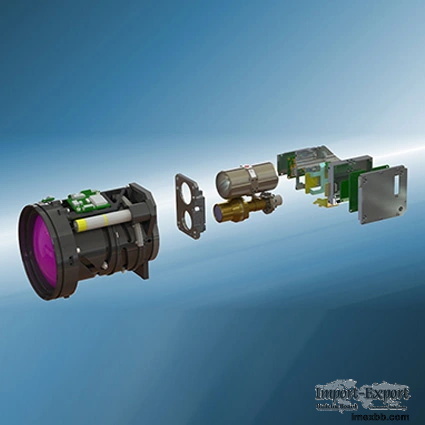 |
 |
Home > Offers to Sell > Consumer Electronics > Cameras & Photoframes > Video Cameras
| Contact: | cameramanufacturer |
|---|---|
| Company: | Shenzhen chenkun Vision Technology Co., Ltd |
| 5A, Unit 2, Building 34, ChunHua SiJi Park, MinZhi Street, LongHua New District | |
| Shenzhen 518000 | |
| China | |
| Phone: | 18923416930 |
| E-Mail: | |
| Date/Time: | 3/27/24 2:54 GMT |
Camera Solution
With unwavering expertise, we specialize in tailoring camera solutions to your
precise needs. Our adept team crafts bespoke hardware configurations, optimizes
sensors and lenses, develops cutting-edge software, and prototypes innovative
designs. Rigorous reliability testing ensures impeccable performance, while our
guidance through certification and mass production ensures a seamless journey
from concept to market. Entrust us with your vision, and experience the
pinnacle of professional camera solution customization.
How Much does it Cost for R & D of a Camera Project?
The cost of Research and Development (R&D) for a camera project can vary widely
depending on the scope, complexity, and specific requirements of the project.
R&D costs can include various expenses such as:
Personnel: The salaries and benefits of engineers, designers, researchers, and
other team members involved in the project.
Materials and Components: Costs associated with sourcing camera sensors,
lenses, image processors, housings, and other hardware components.
Prototyping: Expenses related to creating prototypes and testing different
iterations of the camera design.
Software Development: Costs for developing software for image processing, user
interfaces, connectivity, and other camera functionalities.
Testing and Certification: Fees for testing the camera's performance,
reliability, and safety, as well as obtaining necessary certifications.
Tooling and Equipment: Costs for specialized equipment, tools, and facilities
required for the R&D process.
Intellectual Property: Expenses related to securing patents, trademarks, or
other intellectual property rights.
Supplier and Vendor Relationships: Costs associated with establishing
partnerships with component suppliers, manufacturers, and other vendors.
Market Research: Expenses for market analysis, competitor research, and
identifying customer needs.
Regulatory Compliance: Fees for ensuring the camera project complies with
industry standards and regulations.
Miscellaneous Costs: Other expenses such as travel, training, and
administrative overhead.
Because of the wide range of factors involved, it's challenging to provide a
specific cost estimate without detailed information about the project. Small-
scale camera projects may have lower R&D costs, while more advanced and
specialized camera systems could require substantial investment.
If you're considering an R&D project for a camera, it's recommended to consult
with experienced professionals, engage with suppliers and manufacturers, and
develop a comprehensive budget plan that outlines all potential expenses
associated with the project's development and eventual launch.
What's the Key Technical Point When Start a Camera Project?
Starting a camera project involves several key technical considerations to
ensure the successful development and performance of the camera. Here are some
crucial technical points to focus on when beginning a camera project:
Sensor Selection: Choose the appropriate image sensor based on factors like
resolution, sensor size, sensitivity, dynamic range, and pixel quality. The
sensor is the foundation of image quality.
Lens Compatibility: Ensure the selected lens is compatible with the chosen
sensor size and provides the desired field of view, aperture, and focal length.
Image Processing: Develop robust image processing algorithms for tasks such as
noise reduction, color correction, white balance, auto-exposure, and dynamic
range optimization.
Hardware Design: Design the camera's hardware layout, including the sensor
interface, power management, signal processing, and connectivity options.
Firmware Development: Create firmware to control the camera's functions,
settings, and modes, while ensuring smooth user experiences and seamless
integration with software.
Mechanical Design: Design the camera's physical structure, housing, mounts, and
mechanical components to ensure durability, ergonomics, and protection against
environmental factors.
Optical Design: Optimize the camera's optical system to minimize aberrations,
distortion, and vignetting while maximizing image clarity and sharpness.
Color Accuracy: Implement color calibration and profiling techniques to ensure
accurate and consistent color reproduction across different lighting
conditions.
Low-Light Performance: Enhance the camera's performance in low-light conditions
through sensor sensitivity, noise reduction algorithms, and optimized image
signal processing.
Connectivity: Integrate wired or wireless connectivity options (e.g., USB, Wi-
Fi, Bluetooth) to facilitate data transfer, remote control, and interaction
with other devices.
User Interface: Design an intuitive and user-friendly interface for accessing
camera settings, modes, and features through buttons, dials, touchscreen, or
app interfaces.
Power Efficiency: Optimize power consumption to extend battery life or reduce
energy usage in scenarios where power efficiency is critical.
Heat Management: Implement effective heat dissipation mechanisms to prevent
overheating and maintain stable camera performance during extended use.
Image Stabilization: Incorporate image stabilization techniques (e.g., optical,
digital, or sensor-shift stabilization) to counteract camera shake and improve
image quality.
Environmental Considerations: Account for environmental factors such as
humidity, temperature, and potential exposure to dust or moisture in the
camera's design and sealing.
Testing and Calibration: Rigorously test and calibrate the camera's components,
functions, and performance to ensure consistent and reliable operation.
Safety and Compliance: Ensure the camera complies with relevant safety
standards, regulations, and certifications specific to imaging and electronics.
Future-Proofing: Consider modularity and flexibility in design to accommodate
potential upgrades, advancements, or changes in technology.
Minimum Order: 1 pieces
SOURCE: Import-Export Bulletin Board (https://www.imexbb.com/)
Similar Products:Not exactly what you are looking for? Post an Offer to Buy!
![]()
© 1996-2010 IMEXBB.com. All rights reserved.
|
|
|






